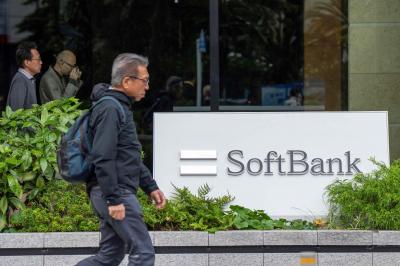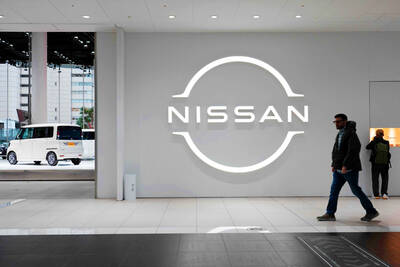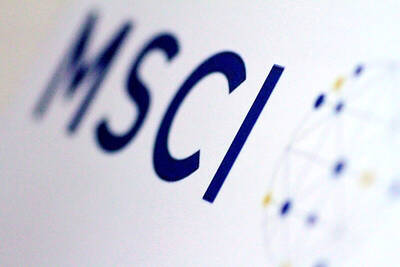Battling for survival, computer memory — or dynamic random access memory (DRAM) — chipmakers are pinning their hopes on forming alliances to weather the most severe slump in the industry’s history. They seek to reduce risk by sharing capacities and investments on next-generation plants, which could reach US$5 billion each.
Last Thursday, Qimonda AG and Elpida Memory Inc, which belong to two different technological camps, announced they would jointly develop next-generation DRAM technologies, marking the latest cooperation among DRAM players.
Elide is also reportedly in talks with ProMOS Technologies Inc (茂德科技) to save the nation’s third-largest DRAM maker from deep losses by buying a single percentage stake. ProMOS lost NT$7.32 billion (US$241 million) last year.
In the first quarter alone, the nation’s major DRAM suppliers — top player Powerchip Semiconductor Corp (力晶半導體), Nanya Technology Corp (南亞科技) and its venture with Qimonda, Inotera Memories Inc (華亞科技) — posted a total of NT$22.8 billion in losses.
Analysts, however, doubt industry consolidation will help DRAM makers turn around on the back of serious oversupply, stemming from huge capacities built up over the last three years.
“Although some might get excited that this industry is consolidating, we are holding a less optimistic view,” George Chang (張家麒), who tracks the DRAM sector for Citigroup, said in a report released right after the announcement of the Qimonda-Elpida deal.
“However, meaningful reduction in supplies would appear remote in this case [Qimonda/Elpida] as well as in the case of the Micron/Nanya deal,” Chang said.
Nanya Technology, the nation’s second-largest maker of computer memory chips, signed an understanding of memorandum last Monday to form a DRAM joint venture, MeiYa Technology Corp (亞美科技), with Micron Memory Inc of the US to make chips in Taiwan and to develop new technologies.
“From an industry perspective, ideally it would be best if we saw marginal players exiting or being taken out by larger players in this tough environment,” Chang said.
However, it seems that most DRAM players are willing to go all out to stay in the market as they have invested heavily in building 12-inch plants, which was quite different from the last trough in 2001, said Joyce Yang (楊雅欣), an analyst with market researcher DRAMeXchange Technology Inc (集邦科技), based in Taipei.
“Samsung Electronics Co’s latest plan to raise its DRAM shipments to 100 percent from the original 70 percent this year — a move aimed at getting a bigger slice of market share — will exacerbate the situation,” Yang said.
DRAM makers may get a short reprieve later this year in expectation of a 30 percent price rebound amid easing oversupply as supply might be capped by technological transition in those new alliances, Yang said.
Nanya Technology expects contract DRAM price to rebound more than 10 percent next month alone and said supply could become a constraint in the second half of this year and next year, implying prices will rise further.
But, Samsung’s plan to accelerate output expansion could dash these hopes as the likelihood of a price recovery may shrink on growth in supply and possible price cuts from the South Korean company, Yang said.
“DRAM players face a rough road ahead,” Yang said. “Technological transition is one thing; how to raise funds for migration is another thing.”
Inotera said it planned to raise NT$10 billion by selling corporate bonds rather than selling new shares later this year. Nanya Technology also planned to raise NT$10 billion.

PERSISTENT RUMORS: Nvidia’s CEO said the firm is not in talks to sell AI chips to China, but he would welcome a change in US policy barring the activity Nvidia Corp CEO Jensen Huang (黃仁勳) said his company is not in discussions to sell its Blackwell artificial intelligence (AI) chips to Chinese firms, waving off speculation it is trying to engineer a return to the world’s largest semiconductor market. Huang, who arrived in Taiwan yesterday ahead of meetings with longtime partner Taiwan Semiconductor Manufacturing Co (TSMC, 台積電), took the opportunity to clarify recent comments about the US-China AI race. The Nvidia head caused a stir in an interview this week with the Financial Times, in which he was quoted as saying “China will win” the AI race. Huang yesterday said

Japanese technology giant Softbank Group Corp said Tuesday it has sold its stake in Nvidia Corp, raising US$5.8 billion to pour into other investments. It also reported its profit nearly tripled in the first half of this fiscal year from a year earlier. Tokyo-based Softbank said it sold the stake in Silicon Vally-based Nvidia last month, a move that reflects its shift in focus to OpenAI, owner of the artificial intelligence (AI) chatbot ChatGPT. Softbank reported its profit in the April-to-September period soared to about 2.5 trillion yen (about US$13 billion). Its sales for the six month period rose 7.7 percent year-on-year

Nissan Motor Co has agreed to sell its global headquarters in Yokohama for ¥97 billion (US$630 million) to a group sponsored by Taiwanese autoparts maker Minth Group (敏實集團), as the struggling automaker seeks to shore up its financial position. The acquisition is led by a special purchase company managed by KJR Management Ltd, a Japanese real-estate unit of private equity giant KKR & Co, people familiar with the matter said. KJR said it would act as asset manager together with Mizuho Real Estate Management Co. Nissan is undergoing a broad cost-cutting campaign by eliminating jobs and shuttering plants as it grapples

MORE WEIGHT: The national weighting was raised in one index while holding steady in two others, while several companies rose or fell in prominence MSCI Inc, a global index provider, has raised Taiwan’s weighting in one of its major indices and left the country’s weighting unchanged in two other indices after a regular index review. In a statement released on Thursday, MSCI said it has upgraded Taiwan’s weighting in the MSCI All-Country World Index by 0.02 percentage points to 2.25 percent, while maintaining the weighting in the MSCI Emerging Markets Index, the most closely watched by foreign institutional investors, at 20.46 percent. Additionally, the index provider has left Taiwan’s weighting in the MSCI All-Country Asia ex-Japan Index unchanged at 23.15 percent. The latest index adjustments are to